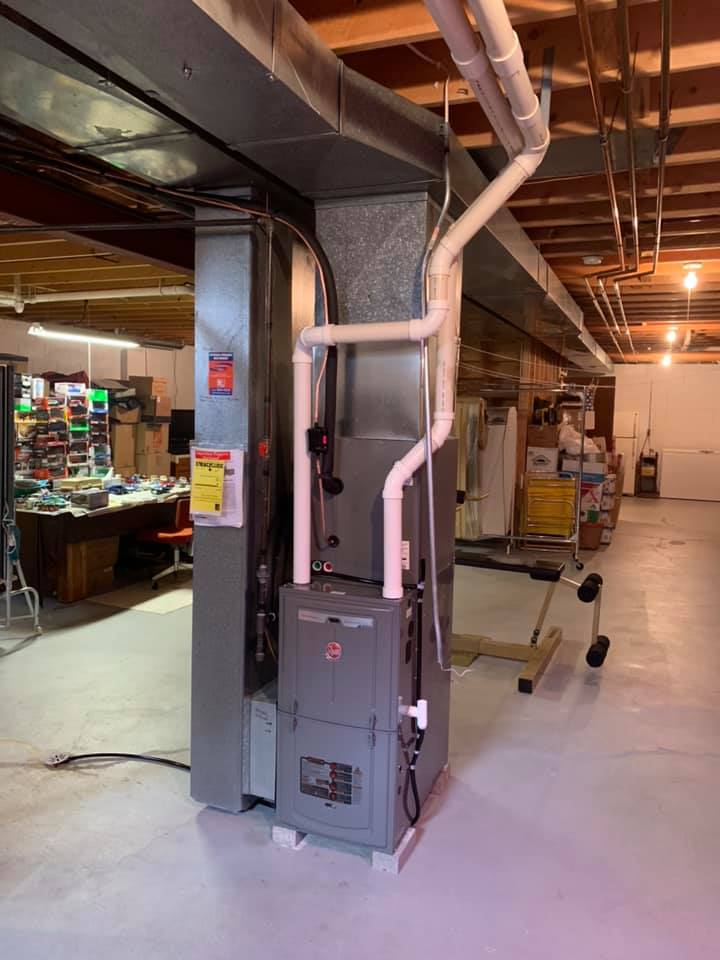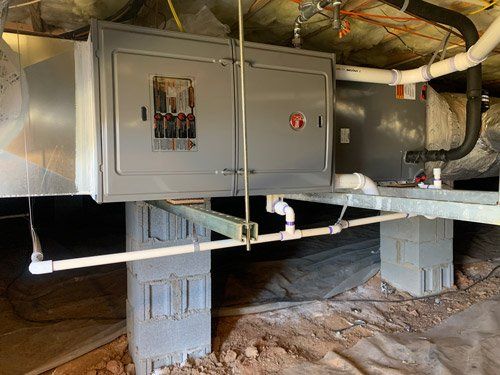Find the leading heating company for furnace installation and expert repairs
Find the leading heating company for furnace installation and expert repairs
Blog Article
The Ultimate Overview to Heating System Setup for a Cozy Home
Furnace installment is a vital element of maintaining a comfortable home environment, particularly during the colder months. Recognizing the different sorts of heaters offered and the value of picking the suitable dimension can considerably affect both performance and comfort degrees. Additionally, an extensive setup process, matched by the right tools and products, ensures ideal performance. This overview intends to gear up home owners with the expertise needed to make enlightened decisions and carry out effective maintenance techniques. As you consider these aspects, the question continues to be: what steps can you take to guarantee your heater serves you well for many years ahead?
Sorts Of Furnaces
When thinking about furnace setup, understanding the various types of heating systems readily available is crucial for making an informed decision. The primary kinds of heaters consist of gas, electrical, and oil heaters, each offering distinctive benefits and factors to consider.
Gas furnaces are the most typical choice because of their efficiency and lower operational costs. They make use of gas or gas, providing quick heating and consistent performance, making them perfect for colder climates.
Electric heaters, while usually easier to install and maintain, often tend to have greater functional expenses. They are typically favored in areas where gas solution is inaccessible or for homes with existing electrical infrastructure.
Oil heaters, though much less common today, stay a viable alternative in certain regions. They melt home heating oil, which can be beneficial during cooler months, yet their reliance on oil delivery postures possible obstacles.
In addition, there are high-efficiency models readily available throughout these types, which can significantly decrease energy consumption and energy expenses. Ultimately, recognizing these heating system types will certainly help homeowners select a system that lines up with their heating requires, budget, and power preferences.
Picking the Right Dimension
Selecting the ideal size for a heating system is critical to making sure optimum efficiency and power performance. An undersized heating system will have a hard time to preserve comfy temperature levels throughout the cool months, leading to increased deterioration, greater energy bills, and potential system failure. Conversely, an oversized furnace may cycle on and off too frequently, leading to inefficient heating and uneven temperature circulation within the home.

Heater sizes are generally gauged in British Thermal Systems (BTUs), which show the amount of power called for to heat a room. It is advisable to talk to a certified HVAC specialist who can do the essential calculations and suggest a suitably sized unit. furnace repair. Buying the appropriate furnace size not only boosts convenience but likewise adds to lasting energy cost savings and system integrity
Installment Process Summary
As soon as the proper heater dimension has been determined, the following step involves understanding the installation process. This process usually begins with a complete analysis of the installment site, consisting of the existing ductwork and air flow systems. Proper planning is important to make sure seamless assimilation and ideal efficiency of the brand-new heating system.
The installment usually consists of separating the old device, which entails securely eliminating any type of electrical connections, gas lines, and ductwork affixed to the previous furnace - furnace repair. Once cleared, the new heater is meticulously located and leveled, ensuring that it satisfies the supplier's requirements for optimum procedure
Next, the installer will attach the essential gas and electric lines, adhering to local codes and security policies. Following this, ductwork may require to be customized or replaced to see post accommodate the brand-new system, making sure effective airflow throughout the home.

Essential Tools and Products
Gathering the necessary tools and materials is vital for a successful heater installation. Appropriate prep work guarantees that the setup procedure is efficient and lessens the potential for errors.
Trick tools required consist of a drill, furnace repair screwdrivers, wrenches, pliers, and a level. A multimeter is necessary for electric connections, while a pipe cutter and flexible wrench are essential for gas line installation. Additionally, a measuring tape and a stud finder will certainly assist in making sure exact placement and protected attachment of the heater.
In regards to materials, you will require ductwork, insulation, and sealing tape to guarantee ideal air movement and power performance. It is also essential to have a new heating system filter handy, along with venting materials, such as PVC pipe or metal flue, depending upon the kind of heater being mounted.
Safety and security equipment, including gloves, goggles, and a face mask, is likewise essential to shield versus dirt and particles throughout installment. Having all these devices and products easily offered not only streamlines the process however likewise improves the security and efficiency of the furnace installation.
Maintenance Tips for Longevity
To guarantee the durability of your heating system, it is necessary to carry out a routine maintenance schedule that resolves vital parts of the system. Begin by replacing or cleaning up the air filter every one to 3 months, as a clogged up filter can limit air flow and decrease performance. In addition, check and clean the blower setting up to avoid dirt buildup that can impede performance.
Following, inspect the thermostat settings and rectify if needed to guarantee accurate temperature level policy. Inspect the ductwork for leaks or clogs, as this can lead to power loss and uneven heating. Frequently lubricate the electric motor and bearings according to the producer's recommendations to decrease deterioration.
Professional examinations check it out ought to take place annually, where a certified specialist can analyze the heating system's total condition, look for gas leaks, and make certain that safety attributes are functioning appropriately. Ultimately, consider setting up a programmable thermostat to maximize energy use and maintain constant home temperature levels. By embracing these maintenance techniques, you can enhance your heating system's performance, prolong its life-span, and ultimately delight in a comfy and comfortable home atmosphere.
Final Thought
Reliable furnace setup is vital for achieving ideal home convenience and power performance. Understanding different heating system kinds and picking the ideal size guarantees appropriate functionality (furnace repair). A careful setup procedure, sustained by the right devices and products, adds significantly to the system's performance. Normal upkeep plays an essential duty in lengthening the life-span of the heater. Abiding by these standards promotes a cozy and inviting living space, vital for withstanding the challenges of colder months.
Report this page